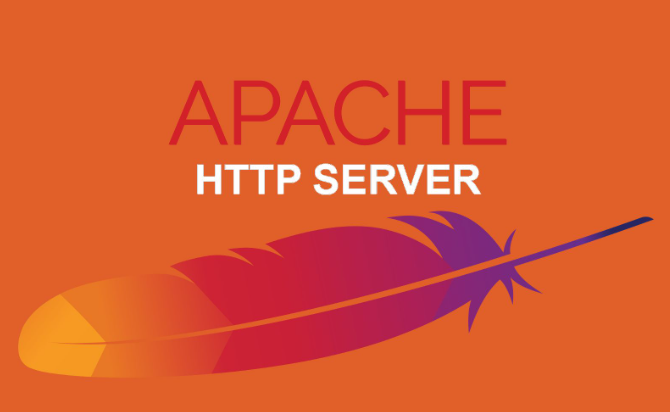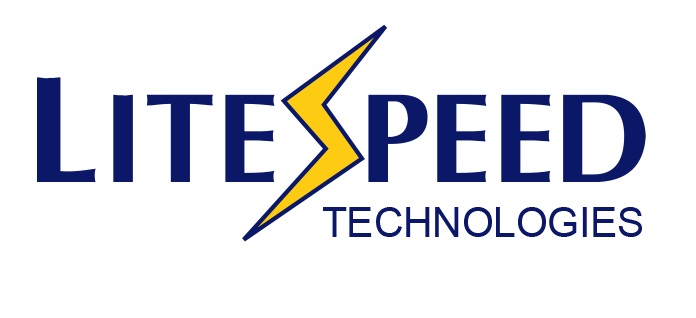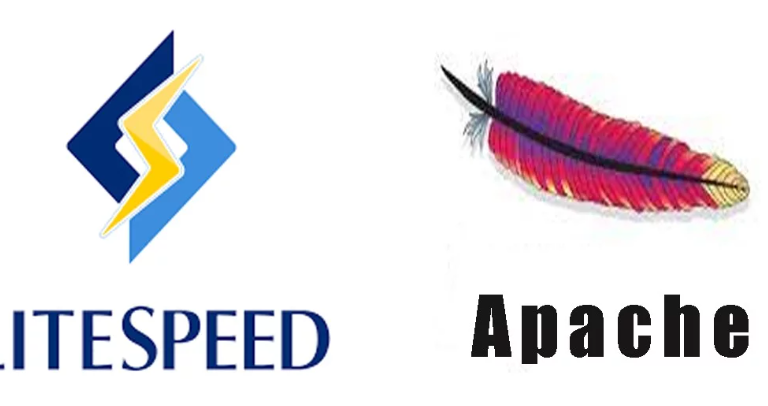Choosing the right web server is a critical decision for WordPress website owners, and the Apache vs LiteSpeed dilemma is at the forefront of this choice. This article provides a concise yet comprehensive overview of the uses, advantages, and disadvantages of Apache and LiteSpeed, along with a performance comparison to guide you toward the optimal server solution.
What is Apache
The Apache HTTP Server, commonly known as Apache, is a robust and widely-used open-source web server software developed and maintained by the Apache Software Foundation. Functioning as the backbone of countless websites globally, Apache is designed to handle the task of serving web pages efficiently. It operates on a variety of operating systems, including Unix-based systems such as Linux and BSD, as well as Windows, making it exceptionally versatile and accessible
One of Apache’s key strengths lies in its modularity, allowing users to customize and extend its functionality through the addition or removal of various modules.

You can more ready about Apache vs Nginx
Uses of Apache
The Apache HTTP Server, commonly known as Apache, is a versatile and widely-used web server software that serves a multitude of purposes across the internet.
Here are some key uses of Apache:
- One of the primary uses of Apache is hosting websites. It handles HTTP requests from clients (browsers) and delivers web content, including static pages and dynamic content generated by applications.
- Apache is instrumental in efficiently delivering web content, including HTML, images, CSS, and JavaScript files. Its robust performance ensures a smooth and responsive browsing experience for users.
- Apache supports various server-side scripting languages like PHP, Python, and Perl. This makes it a popular choice for hosting web applications and frameworks, allowing developers to deploy and run dynamic websites.
- Apache can be configured as a reverse proxy server, acting as an intermediary between client requests and backend servers. This setup benefits load balancing, security, and optimizing resource utilization.
- Apache supports virtual hosting, enabling a single server to host multiple websites with different domain names or IP addresses. This is crucial for shared hosting environments where multiple websites coexist on the same server.
- Apache can be configured to handle File Transfer Protocol (FTP) requests, allowing users to upload and download files securely. While Apache itself primarily handles HTTP, additional modules or separate software can extend its functionality to support FTP.
Advantages of Apache
- Apache is open-source software, meaning its source code is freely available. This fosters a collaborative community, encourages development, and allows users to customize the software to meet their specific needs.
- Apache has a large and active user community. This results in a wealth of online resources, forums, and documentation, making it easier for users to find solutions to issues, get advice, and stay updated on best practices.
- Apache is designed to run on various operating systems, including Unix-based systems like Linux and BSD, as well as Windows. This cross-platform compatibility provides flexibility for users with different server environments.
- Apache is scalable and can handle a range of workloads, from small personal websites to large enterprise applications. Its scalability is particularly advantageous for websites experiencing growth in traffic and resource demands.
- Apache provides robust security features, including SSL/TLS support for encrypted data transmission, authentication modules, and access controls. Regular updates and a vigilant community contribute to maintaining a secure server environment.
- Apache supports various server-side scripting languages, such as PHP, Python, and Perl, making it suitable for hosting dynamic web applications and frameworks.
- Apache can be configured as a reverse proxy server, allowing it to handle requests on behalf of backend servers. This benefits load balancing, improving security, and optimizing resource utilization.
Disadvantages of Apache
- In certain scenarios, Apache can be resource-intensive, especially under high-traffic conditions. This may lead to performance bottlenecks, particularly when compared to more lightweight alternatives.
- Apache’s configuration is primarily done through text files, and for users unfamiliar with its syntax, configuring settings might be challenging. The complexity of configuration files can be a drawback for those seeking a more straightforward setup.
- The performance of Apache can be influenced by factors such as server configuration, the number of modules in use, and the complexity of the hosted applications. This variability may impact the consistency of performance for some users.
- In certain configurations, Apache may have limitations in handling a large number of concurrent connections efficiently. Alternative web servers, such as LiteSpeed or Nginx, are often praised for their superior concurrency handling.
- Apache’s memory usage can be higher compared to some lightweight alternatives. For users with resource constraints, this could be a consideration, particularly when hosting multiple websites on a server.
- While Apache is robust, its default settings may result in slightly slower response times compared to more specialized web servers, especially in scenarios with high levels of concurrent requests.
What is a LiteSpeed webserver?
LiteSpeed Web Server (LSWS) is a high-performance, commercial web server software developed by LiteSpeed Technologies. Known for its exceptional speed and efficiency, LSWS is designed to outperform traditional web servers like Apache while using fewer server resources. One of its key features is an event-driven architecture that enables efficient handling of a large number of concurrent connections.

LSWS’s architecture minimizes resource usage, contributing to faster response times. It is often considered a drop-in replacement for Apache due to its compatibility with Apache configuration files. LSWS offers advanced security features, integrated caching through LiteSpeed Cache, and support for the latest web protocols such as HTTP/3. With a user-friendly WebAdmin console for server management, LSWS is scalable and suitable for a wide range of websites.
Uses of LiteSpeed
Here are some key features of Litespeed
- LiteSpeed supports various server-side scripting languages like PHP, Python, and Ruby. This makes it suitable for hosting dynamic web applications and content management systems.
- For online stores and eCommerce websites, where performance and speed are critical, LiteSpeed can be a preferred choice. Its ability to handle multiple transactions and provide fast response times is advantageous for eCommerce platforms.
- Similar to other web servers, LiteSpeed can be configured as a reverse proxy server. This is useful for load balancing, improving security, and optimizing resource utilization by distributing requests among backend servers.
- LiteSpeed Web Server comes with an integrated caching solution known as LiteSpeed Cache. This feature helps improve website performance by storing static copies of dynamically generated content, reducing the need to regenerate content for each user request.
- LiteSpeed supports the latest version of the HTTP protocol, HTTP/3, contributing to faster and more efficient communication between the server and clients.
Advantages of LiteSpeed:
- LiteSpeed is known for its outstanding performance, outpacing traditional web servers like Apache. It efficiently handles a large number of concurrent connections, resulting in faster response times for websites.
- The event-driven architecture of LiteSpeed minimizes resource usage, making it more efficient in terms of memory and CPU utilization. This efficiency allows it to handle high traffic with lower server resource requirements.
- LiteSpeed is designed to be compatible with Apache configuration files, making it a seamless transition for users familiar with Apache. This compatibility simplifies the migration process and allows for easy integration into existing server setups.
- LiteSpeed provides robust security features, including support for mod_security, IP and bandwidth throttling, and real-time DDoS protection. These features contribute to creating a secure web server environment.
- LiteSpeed supports the latest version of the HTTP protocol, HTTP/3. This support contributes to faster and more efficient communication between the server and clients.
- LiteSpeed includes a user-friendly WebAdmin console for server management. This graphical interface simplifies the process of configuring and monitoring the server.
- LiteSpeed is compatible with various control panels, making it easy to integrate into existing hosting environments and control panel systems.
Disadvantages of LiteSpeed:
- LiteSpeed is a commercial web server, and while it offers a free version with limited features, the full-featured versions may involve licensing costs. This cost factor can be a consideration for budget-conscious users.
- Less Community Support: Compared to open-source alternatives like Apache, LiteSpeed has a smaller user community. While it has active support forums and documentation, the size of the community might limit the availability of third-party plugins or extensions.
- Learning Curve for Advanced Features: While LiteSpeed is relatively easy to set up, configuring and optimizing advanced features may require a learning curve for users who are new to the software or unfamiliar with its specific configurations.
- Dependency on LiteSpeed-Specific Features: Some advanced features, especially those related to server optimizations and caching, may be specific to LiteSpeed. This could potentially create dependencies for users who might consider migrating to a different web server in the future.
- Not as Widely Supported as Apache: Apache remains the most widely used web server, and many applications and scripts are specifically designed to run on an Apache server. While LiteSpeed’s compatibility with Apache is a strength, it may not support all Apache-specific features
Performance Comparison:
- Page Load Times:
- Apache, a reliable workhorse, may demonstrate slightly slower page load times, particularly under high-traffic conditions.
- LiteSpeed’s event-driven architecture positions it for quicker page load times, contributing to an enhanced user experience.
- Resource Utilization:
- LiteSpeed’s efficient resource utilization allows it to handle more concurrent connections with fewer server resources.
- Apache may require additional resources to manage the same level of traffic efficiently.
- Scalability:
- LiteSpeed’s scalability shines when faced with sudden traffic spikes, dynamically adapting without a proportional increase in resource demand.
- Apache’s scalability may be constrained by its resource-intensive nature, necessitating careful resource management.
Conclusion
In the Apache vs LiteSpeed debate, the choice depends on your WordPress website’s specific needs. Apache’s reliability and compatibility make it a safe bet, while LiteSpeed’s focus on speed and resource efficiency caters to those seeking optimal performance. Consider the nuances outlined here to make an informed decision, ensuring that your WordPress website not only runs efficiently but excels in performance and user satisfaction.






